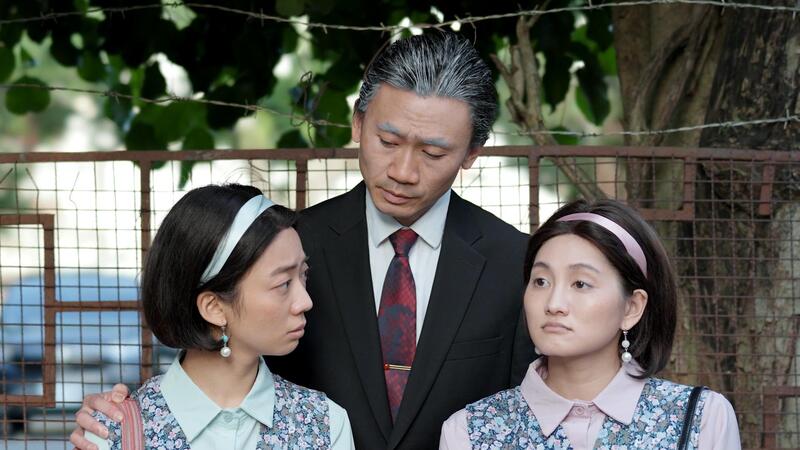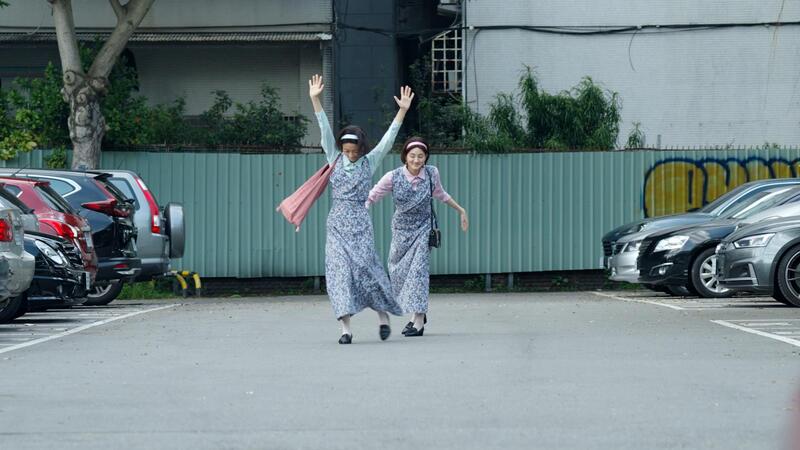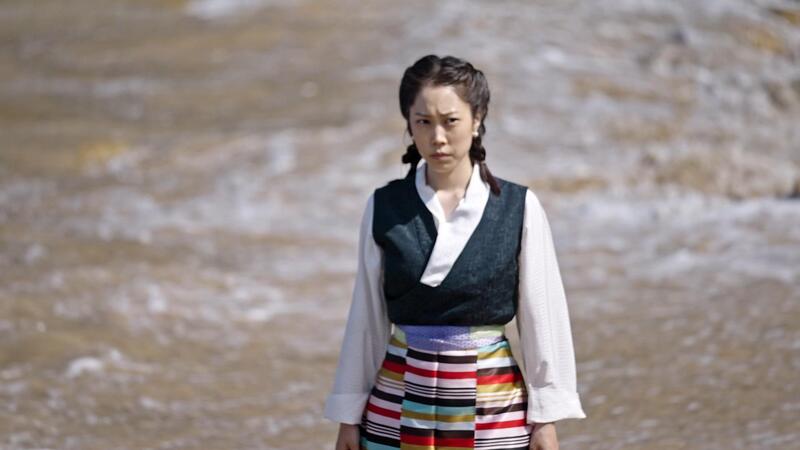Clement Town
舒適小鎮
2023
研究協力Research Assistant
Dolma Tsering
攝影指導Director of Photography
藍皓倫 LAN Hao Lun
攝影師Camera Operator
謝升竑 SIE Sheng Hong
王嘉源 Wang Jia Yuan
黃翰柏 HUNG Han Bo
收音師Boom Operator
王浩泰 WANG Hao Tai
聲音設計Sound Designer
白象音造工作室 Bai-Shiang Music Studio
劉子齊 LIOU Zih Ci
作詞 人聲及人聲旋律Lyrics, vocals and vocal melody
Tenzin Tselha
歌曲製作 Producer of the song
文正錆 John Stephenson
歌曲統籌 Arrangement
羅尊龍 Zunlong
鼓及主吉他Drums and lead guitar
羅尊龍 Zunlong
貝斯及節奏吉他Bass and rhythm guitar
文正錆 John Stephenson
混音Mixed
陸崇樂 Brian Elgin
Sudhanshu Manda
錄音Recorded
王昱辰 Yuchain Wang
Morisound Studio
MH Studios Toronto
造型總監Costume Supervisor
王鐙儀 WANG Deng Yi
彩妝師Makeup Artist
Nana
Dramaturgy and Action Choreographer
顏可茵 YEN Ko Yin
調光調色 Colorist
藍皓倫 LAN Hao Lun
演員 Talent
彭士詮PENG Shin Quan
李欣芸 LI Hsin Yun
陳顥仁 CHEN Hao Jen
李伯瑞 LEE Po Ruey
許容華 SYU Rong Hua
劉培萱 LIU Pei Xuan
高詠婕 GAO Yong Jie
李維中 LI Wei Jhong
駱彥亨 LUO Yan Heng
王建勳 WANG Jian Syun
李佳航 LI Jia Hang
機動 Craft Service
吳聯璜 WU Lian Huang
特別感謝 Special Thanks
打開當代 Open Contemporary Art Center
蔡繡如Showzoo Tsai
Chad Hsu
Rinzin
Tsering Dolma
This work is supported by Department of Cultural Affairs Taipei City Government.
Dolma Tsering
攝影指導Director of Photography
藍皓倫 LAN Hao Lun
攝影師Camera Operator
謝升竑 SIE Sheng Hong
王嘉源 Wang Jia Yuan
黃翰柏 HUNG Han Bo
收音師Boom Operator
王浩泰 WANG Hao Tai
聲音設計Sound Designer
白象音造工作室 Bai-Shiang Music Studio
劉子齊 LIOU Zih Ci
作詞 人聲及人聲旋律Lyrics, vocals and vocal melody
Tenzin Tselha
歌曲製作 Producer of the song
文正錆 John Stephenson
歌曲統籌 Arrangement
羅尊龍 Zunlong
鼓及主吉他Drums and lead guitar
羅尊龍 Zunlong
貝斯及節奏吉他Bass and rhythm guitar
文正錆 John Stephenson
混音Mixed
陸崇樂 Brian Elgin
Sudhanshu Manda
錄音Recorded
王昱辰 Yuchain Wang
Morisound Studio
MH Studios Toronto
造型總監Costume Supervisor
王鐙儀 WANG Deng Yi
彩妝師Makeup Artist
Nana
Dramaturgy and Action Choreographer
顏可茵 YEN Ko Yin
調光調色 Colorist
藍皓倫 LAN Hao Lun
演員 Talent
彭士詮PENG Shin Quan
李欣芸 LI Hsin Yun
陳顥仁 CHEN Hao Jen
李伯瑞 LEE Po Ruey
許容華 SYU Rong Hua
劉培萱 LIU Pei Xuan
高詠婕 GAO Yong Jie
李維中 LI Wei Jhong
駱彥亨 LUO Yan Heng
王建勳 WANG Jian Syun
李佳航 LI Jia Hang
機動 Craft Service
吳聯璜 WU Lian Huang
特別感謝 Special Thanks
打開當代 Open Contemporary Art Center
蔡繡如Showzoo Tsai
Chad Hsu
Rinzin
Tsering Dolma
This work is supported by Department of Cultural Affairs Taipei City Government.
From the 1960s to the 1970s, due to the Cold War and to prevent the expansion of communism, Taiwan as the “Free China” had participated in a series of international military and political operations in the South Asian region. These operations, spanning the borders of modern India, Nepal, Myanmar, China, and reaching the farthest to Pakistan, only gradually stopped after the US and the communist China established diplomatic relations. Initially, the actions were to infiltrate China and gather intelligence while preventing the communist power to expand outwardly. Concrete measures that were taken included forming guerilla troops on the borders, creating settlements in India and Nepal, and establishing a special school for children from these border regions, who were brought to Taiwan and received the education that taught them to be Chinese.
A large number of historical reports and images from South Asia has been preserved. These reports claim to have sent people to infiltrate China for military operations. In reality, the images were “fake” pictures with false notes produced by local intelligence agents working for Taiwan, who had hired villagers living on the borders of Nepal and China to wear traditional clothing and military uniforms of both countries to create such images of staged photography. In addition, to propagandize contributions made by the so-called “refugees” who were returning to the embrace of their “motherland,” a series of staged photographs featuring the reception of refugees at the Keelung Harbor and the Songshan Airport were also taken. In these pictures, people from the communities on the borders wore traditional clothes and stood next to the national flag and soldiers.
The title of this project, Clement Town, is inspired by a secluded town built in modern Uttarakhand, India, with the financial support of the Taiwan government. At that time, it was one of the towns in India which had the most advanced equipment of water and electricity supply in the 1970s. Designed and built by local intelligence agents working for Taiwan, according to a public record from the time, there were once two dozens of similar towns on the borders between China and India. The children who were able to move to and study in Taiwan were more or less connected to these towns.
For this project, the artist selects three sets of images of staged photography from the historical archives: they are pictures taken in a photo studio, group photos taken at the Keelung Harbor, and images of young girls before they arrived in Taiwan for education. Performers are then invited to meet with people who directly or indirectly took part in the special operations on the borders. Through their conversations and interpretations, the artist recreates images that are ten seconds before the scenes captured in the historical pictures. Some of these scenes and events are recreated at the locations where the historical photos were taken, for instance, the West Dock No. 2 of the Keelung Harbor and the special school, which has been converted into a parking lot now.
In this exhibition, this project is exhibited as a site-specific three-channel video shown with three screens enlarged proportionately to match the photographs.
(This is a rough translation of the original in Chinese)
A large number of historical reports and images from South Asia has been preserved. These reports claim to have sent people to infiltrate China for military operations. In reality, the images were “fake” pictures with false notes produced by local intelligence agents working for Taiwan, who had hired villagers living on the borders of Nepal and China to wear traditional clothing and military uniforms of both countries to create such images of staged photography. In addition, to propagandize contributions made by the so-called “refugees” who were returning to the embrace of their “motherland,” a series of staged photographs featuring the reception of refugees at the Keelung Harbor and the Songshan Airport were also taken. In these pictures, people from the communities on the borders wore traditional clothes and stood next to the national flag and soldiers.
The title of this project, Clement Town, is inspired by a secluded town built in modern Uttarakhand, India, with the financial support of the Taiwan government. At that time, it was one of the towns in India which had the most advanced equipment of water and electricity supply in the 1970s. Designed and built by local intelligence agents working for Taiwan, according to a public record from the time, there were once two dozens of similar towns on the borders between China and India. The children who were able to move to and study in Taiwan were more or less connected to these towns.
For this project, the artist selects three sets of images of staged photography from the historical archives: they are pictures taken in a photo studio, group photos taken at the Keelung Harbor, and images of young girls before they arrived in Taiwan for education. Performers are then invited to meet with people who directly or indirectly took part in the special operations on the borders. Through their conversations and interpretations, the artist recreates images that are ten seconds before the scenes captured in the historical pictures. Some of these scenes and events are recreated at the locations where the historical photos were taken, for instance, the West Dock No. 2 of the Keelung Harbor and the special school, which has been converted into a parking lot now.
In this exhibition, this project is exhibited as a site-specific three-channel video shown with three screens enlarged proportionately to match the photographs.
(This is a rough translation of the original in Chinese)
1960-1970年代間,由於冷戰因素與為了防範共產主義的擴張,台灣作為「自由中國」的代表,曾經參與了國際上在南亞一代的系列軍事與政治行動。這些行動橫跨了今日的印度、尼泊爾、緬甸與中國邊境,最西曾抵達巴基斯坦,直到中美建交才逐漸停擺。起初行動主要是為了深入中國蒐集情報,並且阻止共產勢力向外拓展,實際上的作為除了在邊境上建立游擊隊,在印度與尼泊爾設置定居點,同時也在今日信義區設置特殊學校,接運部分散居在邊境上的族群幼童來台就學就養。
當時曾經留下大量來自於南亞的報告與影像,這些報告宣稱潛入中國進行軍事行動,實際上則是為台灣工作的當地情報人員,聘僱定居在尼泊爾及中國邊界的村莊居民分別穿上雙方的傳統服飾及軍服,透過擺拍所完成的「假」照片與虛構的註解。除此之外,為了宣傳「難民」為回返「祖國」所做的貢獻,當時也曾經在接運難民的基隆港與松山機場拍攝過系列擺拍照片,讓來自於邊境的族群穿上傳統服飾,與國旗及軍人合影。
作品名稱:舒適小鎮(Clement Town)一名來自於當時受到台灣政府經濟支持,在今日印度北安查爾邦(Uttarakhand)建造的隱密小鎮,這個小鎮是擁有1970年代最先進的供水及供電設備的印度城鎮之一,由為台灣工作的當地情報人員設計、建造,據當時一份政府出版品的紀錄,類似的小鎮在與中國接壤的印度領土上曾多達二十多個,後來得以來台就學的孩童,或多或少與這些城鎮的居民有關
在這次的計畫當中,我自當年的檔案中篩選出三組透過擺拍所完成的影像,分別是在相館拍攝的紀念照、在基隆港拍攝的合照,與少女們抵台就學前所拍攝的照片。我邀請表演者與當年參與或間接參與接運計畫及邊境上特殊行動的人們見面,試圖透過交談與詮釋,重新創造出這些照片被拍下前的樣貌,部分在當時的拍攝地點,如基隆港西側二號碼頭、今已成為停車場的特殊學校等地,還原照片被拍攝前所發生的事件。
當時曾經留下大量來自於南亞的報告與影像,這些報告宣稱潛入中國進行軍事行動,實際上則是為台灣工作的當地情報人員,聘僱定居在尼泊爾及中國邊界的村莊居民分別穿上雙方的傳統服飾及軍服,透過擺拍所完成的「假」照片與虛構的註解。除此之外,為了宣傳「難民」為回返「祖國」所做的貢獻,當時也曾經在接運難民的基隆港與松山機場拍攝過系列擺拍照片,讓來自於邊境的族群穿上傳統服飾,與國旗及軍人合影。
作品名稱:舒適小鎮(Clement Town)一名來自於當時受到台灣政府經濟支持,在今日印度北安查爾邦(Uttarakhand)建造的隱密小鎮,這個小鎮是擁有1970年代最先進的供水及供電設備的印度城鎮之一,由為台灣工作的當地情報人員設計、建造,據當時一份政府出版品的紀錄,類似的小鎮在與中國接壤的印度領土上曾多達二十多個,後來得以來台就學的孩童,或多或少與這些城鎮的居民有關
在這次的計畫當中,我自當年的檔案中篩選出三組透過擺拍所完成的影像,分別是在相館拍攝的紀念照、在基隆港拍攝的合照,與少女們抵台就學前所拍攝的照片。我邀請表演者與當年參與或間接參與接運計畫及邊境上特殊行動的人們見面,試圖透過交談與詮釋,重新創造出這些照片被拍下前的樣貌,部分在當時的拍攝地點,如基隆港西側二號碼頭、今已成為停車場的特殊學校等地,還原照片被拍攝前所發生的事件。
Screenshot, 2023


















